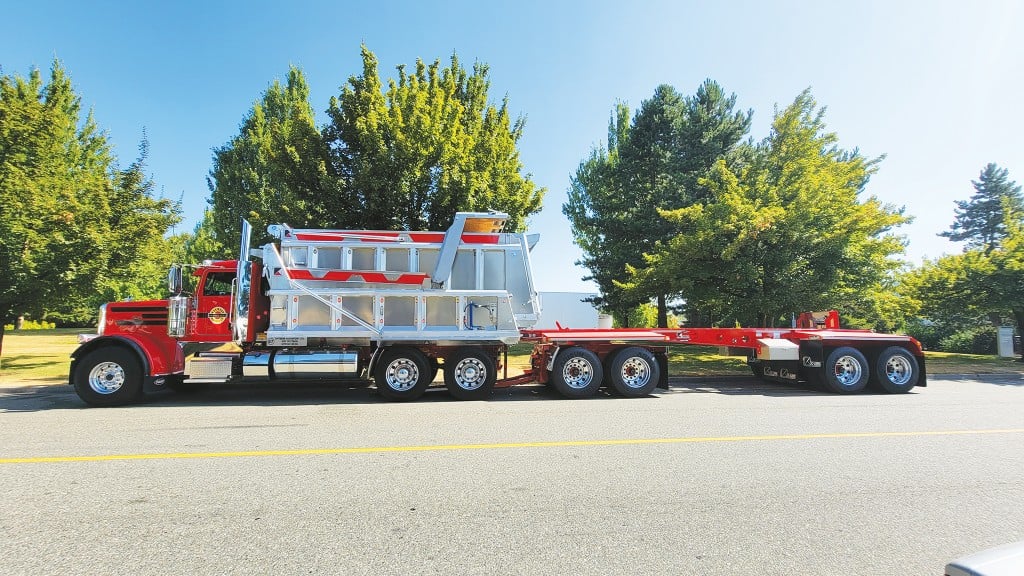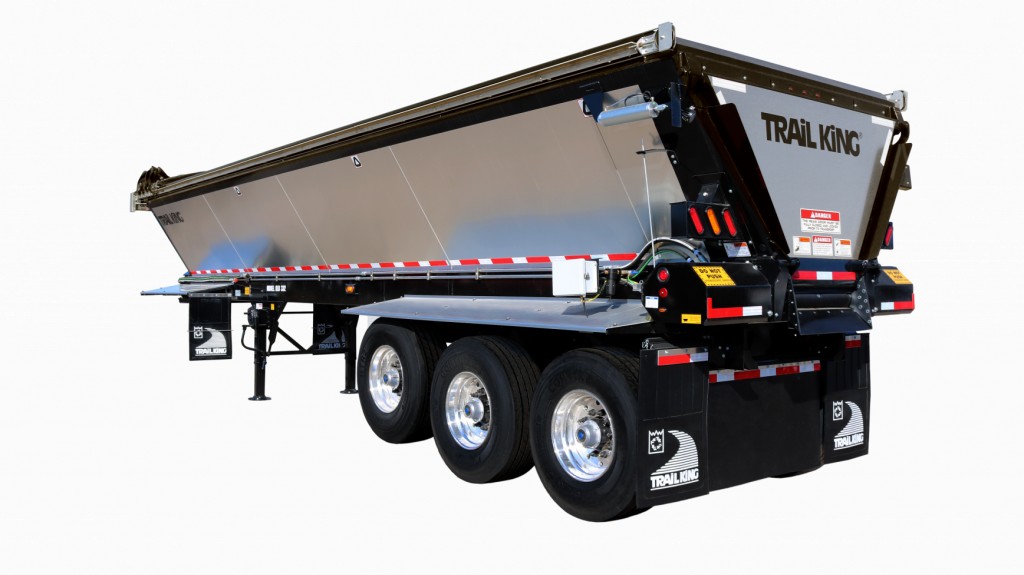Transfer trailers add capacity and versatility
Features on the trailer include hauling more into tighter job site with transferable boxes

City construction work regularly contends with traffic, close quarters and tight spaces. Hauling material to job sites can prove to be a challenge, especially when it requires many truckloads to get the job done.
Choosing the right trailer can mean the difference in a job being on time and being behind schedule. There are plenty of options for hauling heavy equipment, bulky items, and longer trailers. Flatbed trailers, enclosed trailers, and multi axle trailers are all good options for towing stability and moving construction materials.
However, transfer trailers with tilt beds and a high weight capacity can make hauling building materials easier and enable easy loading for operators. The higher payload capacity and trailer length makes the trailer designed for big jobs.
While truck and trailer combinations are one way to get more material moved more quickly, pup trailers aren't an ideal solution - they allow a single truck to deliver twice as much product, but are also too big to maneuver in tight spaces. That's where swapping boxes with transfer trailers comes in.
Transfer trailers add capacity and versatility
A transfer trailer is essentially a second box that rides on a trailer behind the truck, just as a pup trailer would. The difference is that the transfer trailer can be dropped at a point near the job site, adding maneuverability for the truck, while still carrying the same amount of material.
Steve Reeves, sales manager with K-Line Trailers, explained that these trailers have become popular with a variety of operations, most notably in paving and aggregates delivery. The ability to deliver that additional weight with one truck is ideal for those sectors.
Asphalt operations are frequent users of transfer trailers.
"They are very unique - you can take 38 to 40 tons and pave a highway, and leave your trailer on the side of the road," Reeves described. "You can haul as much legal weight as you're allowed, put it in a tight space and not worry about it."
How the transfer trailer works in the field
The concept is pretty simple: a truck is fitted with a dump box that pairs with the box riding on the trailer and is equipped with a high-lift tailgate. The box on the truck and the one on the trailer are both filled to local weight limits and can then be hauled near to the site where material is to be delivered.
Then, the driver can unhook the hydraulic and electric connections to the trailer and leave it behind while they drive to the site nearby and dump the first load, similar to the mechanisms on a tipper trailer. Once completed, the driver can then return to the trailer, transfer the entire box from the trailer into the truck box, and return to the site to dump a second load. Then the driver returns, places the transfer box back onto the trailer, hooks up and heads off for another load.
An operator who is good at loading and unloading the boxes can do so in a few minutes, Reeves said. There is some precision needed to get it right, but the trailers are designed to make it easy.
Features on the transfer trailer play a crucial role in transportation
Tipping trailers have a hydraulic or pneumatic lifting tool that allows the front or side of the trailer to be raised up for unloading cargo.
"When you come back to the trailer, your truck box is obviously empty. Then you back the truck up to a set of horns that stick out the front of the trailer, which go into a set of pockets on the back of the truck box tailgate," Reeves said. "Once you're mated to the trailer, you hook up hydraulics to the back of the truck box, which then allows you to have hydraulics to the transfer trailer. The trailer is on a hydraulic motor and chain, which moves the trailer box into the truck box."
The transfer box is pushed onto the truck using a hydraulically driven chain on the trailer, with wheels that ride on tracks within the truck box. Once in position, it's locked in place, the trailer can be left behind and the transfer box carried to the job site. When dumped, it returns to the right flatbed trailer and the process is done again, this time in reverse.
The trailer can be dropped at the roadside, the box makes loading the trucks easy in tight spaces.
Flatbed trailers improve operator maneuverability
This type of system is an excellent option for heavy machinery loads and material hauling, like paving, Reeves noted. In a fast-paced situation where a large payload capacity of asphalt is needed quickly and efficiently, the ability to haul up to 40 tons and be transported safely while maintaining the truck's maneuverability is a big benefit.
"When you're paving a road, you're not dumping in one spot, you're backing in to a paver, putting your box on a 25- or 30-degree angle, and you're being pushed down the highway running material into the paver - and then you do the same thing with your trailer box in there," Reeves described.
These units are less useful for short hauls from point to point, and the overall height can be a challenge for construction or demolition use - the overall height of the box for oversized items and loads makes loading the trailer box for hauling material out of a job site more difficult, Reeves noted.
Transfer trailers do have plenty of moving parts, so it's important to keep maintenance in mind when purchasing one. "If you don't look after it, it's not going to last. Wheel torques, wheel seals, hydraulic chain, greasing - general monthly or weekly maintenance and greasing is a must," Reeves said.



